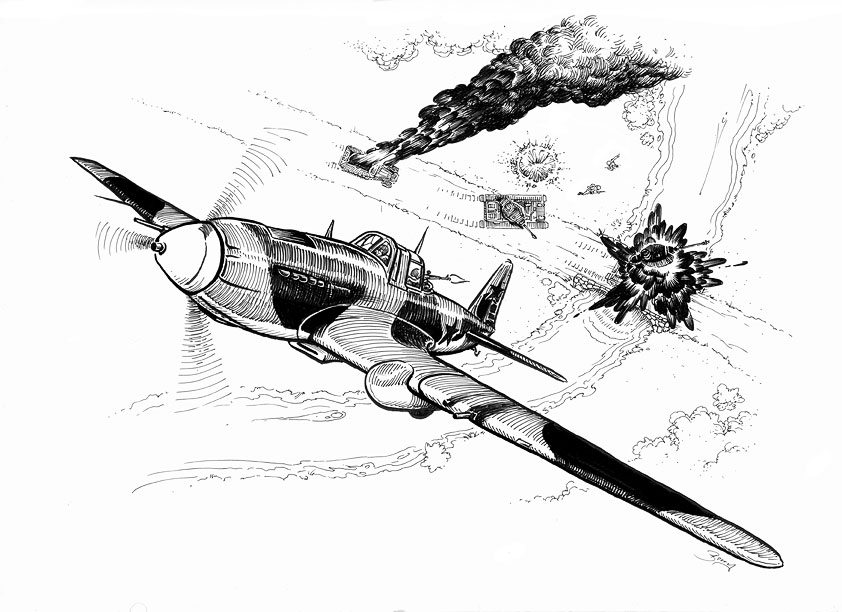Meanwhile, in Russia, the Germans made a last ditch effort to gain the upper hand. Unfortunately for them, they chose a painfully obvious place to launch their attack, and the Russians had plenty of time to prepare for the battle of Kursk. The largest single tank battle in history unfolded, with both sides suffering staggering losses. Swarms of Stukas and Sturmoviks circled overhead, visiting death from above upon any tank unlucky enough to cross their paths. The aging Stukas had recently been given a new lease of life by slinging a pair of monstrous 37mm anti-tank guns beneath their wings, which gave Russian tank crews something to think about whenever they heard that creepy little siren. It's Soviet counterpart, the IL-2 Sturmovik, was equally good at making enemy tank crews nervous, and had left many a Luftwaffe fighter pilot muttering to himself on the way back home to rearm. The Sturmovik was very nearly a tank itself, heavily armed and armored and, despite being slower than a snail's tax return, was a very difficult plane to shoot down. A single attack by IL-2's during the battle of Kursk subtracted 70 tanks from the German order of battle within 20 minutes. To compound this threat from the air, the Russian's latest fighter plane, the LA-5FN, began to appear in numbers alongside the latest Yaks, and for the first time on the Russian front the Luftwaffe was facing an enemy who overmatched them, not only in quantity, but in quality of arms as well. The writing was on the wall.

The opening of the southern front to the U.S. bomber offensive, and the ability of the new Mustang to escort American bombers wherever they wanted to go, put the USAAF in the driver's seat, but they still weren't sure where they wanted to go. About the only thing the brass could agree on regarding target priorities was that something needed to be done about all of those pesky German fighters. But their early efforts against German aircraft production did not seem to be producing the hoped for weakening of German fighter defenses. Allied strategic analysts (people who compile large amounts of data and then insert them into thick, impressive-looking portfolios that are so painfully tedious and boring to read that people either nod in agreement with their conclusions or completely dismiss them, depending upon how polite they happen to be. They are not to be confused with German general staff officers, who weren't well connected Ivy League grads but experienced soldiers whose advice Hitler always listened to politely before launching into a long-winded and passionate monologue about why they were completely and utterly wrong and then firing them.) suggested a variety of targets, all of which were bombed at one time or another in hopes of finding the Achilles heel of the German war machine. Most of the bombing did not produce the paralysis intended, although it certainly made life tough on the German citizens, and the Luftwaffe high command had been forced to withdraw pilots from the various combat theaters to use them for the air defense of the Reich.

Suddenly an eerie calm descended over the skies of Germany, and nary a bomb was heard to fall anywhere over the Reich for nearly ten days. It was the silence before the storm, and the storm broke over Hamburg on July 24th, 1943 as massed formations of Allied bombers using new tactics bombed the city's inhabitants senseless night and day for an entire week, reducing the city to a burning ruin and sending the surviving population into the surrounding countryside looking for safer lodging. The calamity united the Luftwaffe generals with a new resolve to give fighter production and the air defense of the Reich the highest priority, a very sensible idea that was, of course, rejected by Hitler, who felt that the best way to discourage the Allied bombings was to build more bombers of their own and bomb London, an idea that had not really been working since 1940 and was even less likely to succeed now. This was about the time that several exasperated German generals began making plans to blow up Hitler, which seemed the only real way to get him to agree to anything.







